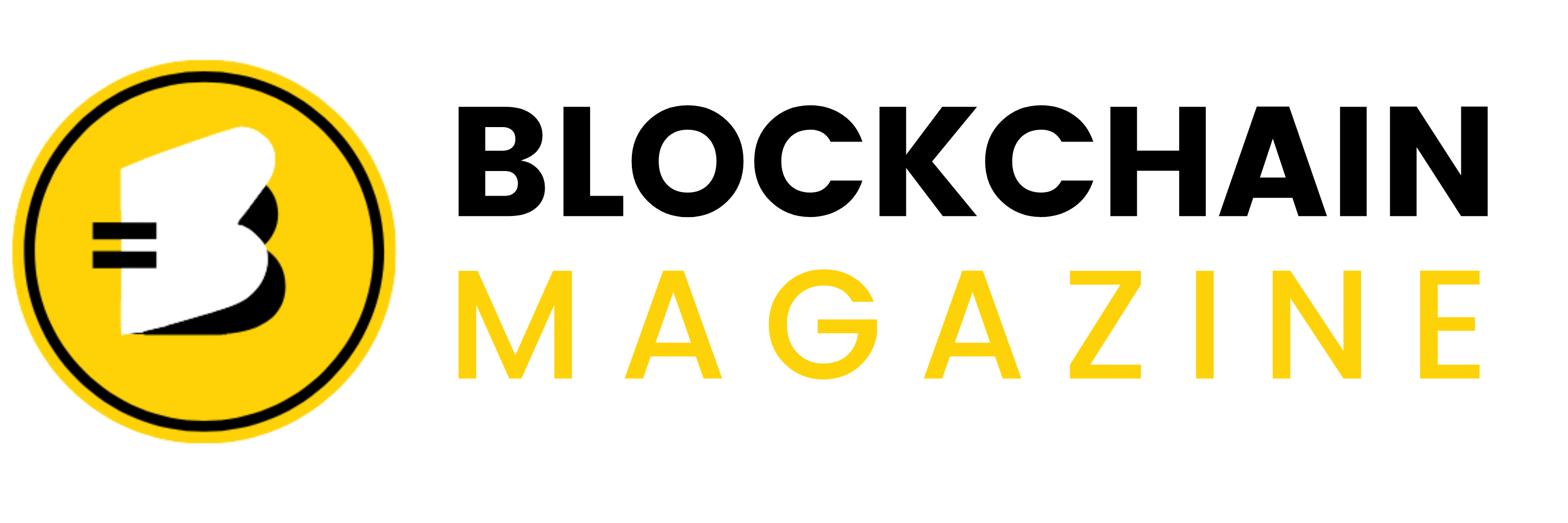What Happens in the Mempool? Unveiling the Mystery Behind Blockchain’s Transaction Queue!
Ever wondered what happens to your blockchain transaction after you hit send? It doesn’t just magically land on the blockchain. Nope, it takes a detour through something called the mempool. Think of it as a waiting room where transactions hang out before being picked up and added to a block. This process is a big deal because it determines how fast your transaction gets confirmed and even how much you’ll pay in fees. Let’s break it down and see what all the fuss is about when it comes to the mempool in blockchain.
Key Takeaways
- The mempool is a temporary holding area for blockchain transactions before they are confirmed.
- Transactions with higher fees are typically prioritized for faster processing.
- Mempool congestion can lead to delays and higher transaction costs.
- Bots and attackers often exploit mempool data for financial gain.
- Layer 2 solutions and other innovations are shaping the future of mempool management.
Understanding the Role of the Mempool in Blockchain
What Is a Mempool and Why Does It Matter?
The mempool is like a waiting room for blockchain transactions. When you send a transaction, it doesn’t immediately make its way into a block. Instead, it sits in the mempool—a temporary storage area—until miners or validators pick it up. Think of it as a digital queue where transactions wait for their turn to be confirmed. The mempool is essential because it ensures transactions are organized and prioritized, rather than being processed in a chaotic manner. Without it, blockchain networks would struggle to manage the constant influx of transaction requests.
Key reasons why the mempool matters:
- Transaction prioritization: Higher fees often mean faster processing.
- Network health indicator: A crowded mempool can signal high activity, like during market surges.
- Efficiency: It allows nodes to manage transaction data before finalizing blocks.
How Transactions Enter the Mempool
When you hit “send” on your crypto wallet, your transaction doesn’t go straight to the blockchain. Instead, it gets broadcasted to nodes in the network. These nodes verify the transaction’s validity—checking factors like digital signatures and sufficient balances. Once verified, the transaction enters the mempool, waiting for inclusion in the next block.
Here’s a simplified step-by-step:
- You initiate a transaction from your wallet.
- The transaction is broadcasted to blockchain nodes.
- Nodes validate the transaction and add it to the mempool.
This process ensures that only valid transactions make it to the blockchain, maintaining the network’s integrity.
The Relationship Between Mempool and Blockchain Nodes
Blockchain nodes are the backbone of the mempool. Each node has its own version of the mempool, which may slightly differ based on network latency or node configuration. Nodes communicate with one another to share transaction data, ensuring consistency across the network.
Key points about their relationship:
- Nodes manage the mempool: They store, validate, and prioritize transactions.
- Decentralization: Since every node has its own mempool, there’s no single point of failure.
- Scalability challenges: When the mempool grows too large, nodes may struggle to handle the load, leading to delays or dropped transactions.
A crowded mempool often signals a busy blockchain network, such as during market surges or popular token launches. This can lead to higher fees and longer wait times for users.
The Journey of a Transaction Through the Mempool
From Wallet to Mempool: The First Step
When you initiate a blockchain transaction, it doesn’t immediately get added to the blockchain. Instead, it starts its journey in the mempool. Think of the mempool as a waiting room where all unconfirmed transactions gather. When you hit “send” on your wallet, your transaction is broadcast to the network and lands in the mempool of nodes. These nodes are essentially computers running the blockchain software, and they temporarily store your transaction while miners or validators decide its fate.
Key steps in this process:
- Transaction Creation: Your wallet packages the transaction details, including sender, receiver, and the fee you’re willing to pay.
- Broadcasting: The transaction is broadcast to blockchain nodes.
- Mempool Storage: Nodes receive and store the transaction in their mempool.
How Transactions Are Prioritized in the Mempool
Not all transactions are treated equally in the mempool. Transactions with higher fees are often prioritized, especially in blockchains like Bitcoin or Ethereum. Miners or validators, who process these transactions, naturally prefer ones that offer higher rewards.
Factors influencing prioritization:
- Gas Fee: The higher the fee, the quicker your transaction gets picked.
- Transaction Size: Larger transactions might take longer as they consume more block space.
- Network Congestion: During busy periods, only high-fee transactions make the cut.
Here’s a simple table to illustrate:
| Priority Level | Gas Fee (in Gwei) | Estimated Wait Time |
|---|---|---|
| High | 100+ | ~1-2 minutes |
| Medium | 50-99 | ~5-10 minutes |
| Low | <50 | ~30 minutes or more |
The Impact of Gas Fees on Mempool Dynamics
Gas fees play a pivotal role in shaping mempool activity. When the network is busy, gas fees skyrocket, leaving low-fee transactions stuck in the mempool for extended periods. This dynamic often leads users to overpay just to ensure their transactions are confirmed quickly.
- During Peak Times: Expect higher fees and longer waiting times.
- Off-Peak Hours: Fees drop, and transactions clear faster.
- Stuck Transactions: If your fee is too low, your transaction might stay in the mempool indefinitely or even get dropped.
The mempool is a dynamic space where every transaction competes for attention. Understanding how fees and priorities work can save you both time and money.
Challenges and Vulnerabilities in the Mempool
Front-Running and Sandwich Attacks Explained
Front-running happens when someone sees a transaction in the mempool and submits their own with a higher gas fee to be processed first. This is like cutting in line but with money involved. Sandwich attacks take this further. Imagine you’re buying a token, and someone places a buy order just before yours and a sell order right after. They profit from the price change caused by your transaction. These attacks exploit the open nature of mempools, where transaction data is visible to everyone.
How Bots Exploit Mempool Data
Bots are like hawks circling the mempool, scanning for profitable opportunities. They can monitor pending transactions and act faster than humans ever could. Here’s how they typically work:
- Identify profitable trades: Bots track large transactions or price-impacting trades in real time.
- Submit competing transactions: They use higher gas fees to jump the queue.
- Automate everything: With no need for sleep, bots can run 24/7, constantly scanning and acting.
While some bots are used ethically, many exploit weaknesses in the system, making them a controversial topic in the blockchain space.
The Ethical Debate Around Mempool Exploitation
Should mempool data be free for all to use? That’s the big question. On one hand, the transparency of blockchain is what makes it revolutionary. On the other, this openness can lead to unethical practices like front-running. Some argue that stricter rules or encryption could protect users, while others believe that innovation will naturally solve these problems over time.
The mempool is both a strength and a weakness of blockchain technology. It enables transparency but also opens the door to exploitation. Striking the right balance is one of the major challenges for the future of decentralized systems.
Optimizing Mempool Performance
Techniques to Reduce Mempool Congestion
Managing congestion in the mempool is no small feat, but there are a few tried-and-true methods that can help. One key approach is the use of layer 2 solutions, like rollups and payment channels, which offload transaction processing from the main blockchain. For example:
- Rollups: These bundle multiple transactions into a single batch, reducing the load on the main chain.
- Payment Channels: Temporary off-chain channels, such as the Lightning Network, handle transactions privately before settling them on-chain.
- Sharding: Splits the blockchain into smaller, more manageable pieces, distributing the workload and easing congestion.
These methods not only improve blockchain throughput but also help lower transaction fees, making the network more efficient for everyone.
The Role of Consensus Mechanisms in Mempool Efficiency
Consensus mechanisms play a pivotal role in determining how quickly transactions move from the mempool to the blockchain. Proof-of-Stake (PoS), for instance, is faster and more energy-efficient compared to Proof-of-Work (PoW). Here’s a quick comparison:
| Consensus Mechanism | Speed | Energy Use |
|---|---|---|
| Proof-of-Work (PoW) | Slower | High |
| Proof-of-Stake (PoS) | Faster | Low |
By adopting newer consensus models, blockchains can achieve quicker transaction finality, reducing the time transactions spend lingering in the mempool.
How Blockchain Scalability Solutions Impact the Mempool
Scalability solutions are game-changers for mempool performance. They aim to handle more transactions without overloading the network. Some notable solutions include:
- State Channels: Allow users to transact off-chain, settling only the final state on the blockchain.
- Sidechains: Independent chains that run alongside the main blockchain, processing transactions separately.
- Optimized Block Sizes: Techniques like Segregated Witness (SegWit) increase the number of transactions per block, reducing mempool backlog.
When scalability solutions are implemented effectively, they not only enhance the blockchain’s capacity but also ensure a smoother, faster user experience.
In summary, optimizing the mempool involves a mix of innovative technologies and strategic adjustments. From congestion-reducing techniques to advanced consensus mechanisms and scalability solutions, every improvement makes the blockchain ecosystem more robust and user-friendly.
Innovative Use Cases of Mempool Data
Cryptocurrency Arbitrage Opportunities
Mempool data opens up fascinating opportunities for cryptocurrency arbitrage. Traders can monitor unconfirmed transactions to identify price differences across exchanges. By acting quickly, they can buy low on one platform and sell high on another, locking in profits. This strategy relies on real-time insights from the mempool, where pending transactions reveal market trends before they fully materialize. Tools that analyze this data can give traders an edge, especially in volatile markets.
Monitoring Network Health Through Mempool
The mempool serves as a real-time snapshot of blockchain activity. By analyzing the number and types of transactions waiting to be confirmed, developers and analysts can gauge the network’s health. A congested mempool might indicate high demand or technical bottlenecks, while a near-empty one could signal low usage. Mempool monitoring is particularly useful for retail traders, helping them track large, unconfirmed transactions and assess pre-trade liquidity flows. This data can also guide decisions about network upgrades or fee adjustments.
Leveraging Mempool Insights for Blockchain Analytics
Blockchain analytics firms are increasingly using mempool data to offer deeper insights. From tracking transaction patterns to predicting confirmation times, the mempool provides a wealth of information. Companies can use this data to enhance fraud detection, optimize transaction routing, or even forecast gas fee trends. For instance, understanding how bots interact with the mempool can help identify potential vulnerabilities and improve security measures.
The mempool isn’t just a waiting room for transactions—it’s a treasure trove of actionable data. Whether you’re a trader, developer, or analyst, tapping into its potential can unlock new opportunities in the blockchain ecosystem.
Future Trends and Developments in Mempool Management
The Rise of Layer 2 Solutions and Their Effect on Mempool
Layer 2 solutions are stepping up to address the growing pains of blockchain scalability. By handling transactions off the main blockchain, technologies like ZK-rollups and optimistic rollups reduce congestion in the mempool. These solutions essentially “batch” multiple transactions and then settle them on the main chain, meaning fewer individual transactions clog the queue. This not only speeds up the process but also lowers costs for users. For instance, the Lightning Network for Bitcoin and Arbitrum for Ethereum are already showing how effective these approaches can be.
Advancements in Mempool Security Measures
Security in the mempool is a hot topic, especially with the rise of bots exploiting transaction data. Developers are working on encryption techniques to mask transaction details while they’re in the mempool. This could make it much harder for bots to execute front-running or sandwich attacks. Another promising area is AI-driven monitoring systems, which can identify suspicious patterns in real time and help mitigate potential exploits. As blockchain adoption grows, safeguarding the mempool will be critical to maintaining user trust.
Predictions for Mempool Evolution in Blockchain
Looking ahead, the mempool of the future might not even resemble what we know today. With innovations like sharding and cross-chain interoperability, the way transactions are queued and processed could change entirely. Imagine a world where transactions flow seamlessly across multiple chains, reducing the load on any single mempool. Additionally, as blockchain technology becomes more energy-efficient and scalable, mempool congestion could become a thing of the past. However, this evolution will depend heavily on how quickly these technologies can be implemented and adopted.
Wrapping It Up: The Mempool’s Role in Blockchain
So, there you have it. The mempool might seem like just a waiting room for transactions, but it’s so much more. It’s where the real action happens—where transactions are prioritized, strategies are played out, and sometimes, sneaky tactics come into play. Whether you’re swapping tokens or just curious about how blockchain works, understanding the mempool gives you a peek behind the curtain. It’s not just about the tech; it’s about the choices we make and the systems we build. And as blockchain keeps evolving, the mempool will stay right at the heart of it all, shaping how we interact with this digital world.
Frequently Asked Questions
What is a mempool in blockchain?
A mempool is a temporary storage area where pending transactions wait before being added to the blockchain. It acts like a waiting room for transactions.
Why do some transactions take longer in the mempool?
Transactions with lower fees often take longer to process because miners prioritize transactions with higher fees to maximize their rewards.
What is a sandwich attack in the mempool?
A sandwich attack happens when bots manipulate the price of a token by placing transactions before and after yours, profiting from the price change they create.
How do gas fees influence the mempool?
Gas fees determine the priority of transactions in the mempool. Higher fees mean your transaction is more likely to be picked by miners quickly.
Can mempool data be used ethically?
Yes, mempool data can be used for positive purposes, like monitoring network health or identifying cryptocurrency arbitrage opportunities.
What are some ways to reduce mempool congestion?
Techniques like increasing block size, implementing Layer 2 solutions, and optimizing consensus mechanisms help reduce congestion in the mempool.
Stay informed with daily updates from Blockchain Magazine on Google News. Click here to follow us and mark as favorite: [Blockchain Magazine on Google News].
Get Blockchain Insights In Inbox
Stay ahead of the curve with expert analysis and market updates.
latest from tech
Disclaimer: Any post shared by a third-party agency are sponsored and Blockchain Magazine has no views on any such posts. The views and opinions expressed in this post are those of the clients and do not necessarily reflect the official policy or position of Blockchain Magazine. The information provided in this post is for informational purposes only and should not be considered as financial, investment, or professional advice. Blockchain Magazine does not endorse or promote any specific products, services, or companies mentioned in this posts. Readers are encouraged to conduct their own research and consult with a qualified professional before making any financial decisions. The featured image used is just a creative depiction of the title and it does not intend to hurt sentiments of any person or institution. If it hurts anyone sentiments, please do not hesitate to reach out to Blockchain Magazine.

 Bitcoin
Bitcoin  Ethereum
Ethereum  XRP
XRP  Tether
Tether  Solana
Solana  USDC
USDC  Dogecoin
Dogecoin  Cardano
Cardano  Lido Staked Ether
Lido Staked Ether  TRON
TRON  Wrapped Bitcoin
Wrapped Bitcoin  Chainlink
Chainlink  Wrapped stETH
Wrapped stETH  Avalanche
Avalanche  Sui
Sui  Stellar
Stellar  Litecoin
Litecoin  LEO Token
LEO Token  Hedera
Hedera  Toncoin
Toncoin  Shiba Inu
Shiba Inu  Hyperliquid
Hyperliquid  USDS
USDS  Polkadot
Polkadot  WETH
WETH  MANTRA
MANTRA  Bitcoin Cash
Bitcoin Cash  Ethena USDe
Ethena USDe  Bitget Token
Bitget Token  Wrapped eETH
Wrapped eETH  Uniswap
Uniswap  Monero
Monero  WhiteBIT Coin
WhiteBIT Coin  NEAR Protocol
NEAR Protocol  Pepe
Pepe  Bittensor
Bittensor  Aave
Aave  Aptos
Aptos  Ondo
Ondo  Dai
Dai  Internet Computer
Internet Computer  Official Trump
Official Trump  Mantle
Mantle  Ethereum Classic
Ethereum Classic  Tokenize Xchange
Tokenize Xchange  OKB
OKB  Gate
Gate  sUSDS
sUSDS  Sonic (prev. FTM)
Sonic (prev. FTM) 




